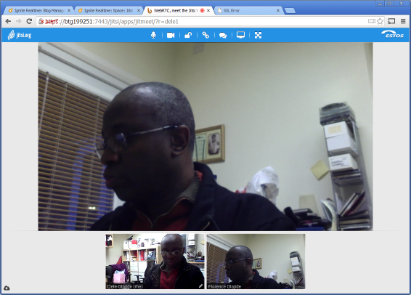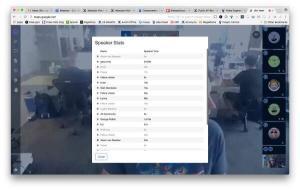

Let's add the JIDs of the videobridge nodes to Prosody. Please note in this tutorial, the domain name or is the domain of the main Jitsi server (Server A).įirst, we need to allow all videobridges to be able to create their own pubsub nodes. Jitsi Videobridge is a WebRTC compatible video router or SFU that lets build highly scalable video conferencing infrastructure Build massively scalable multiparty video applications Stop mixing video channels and start using Jitsi Videobridge instead. Let's SSH onto Server A, this machine has a default Jitsi meet installation, and by default it also has one videobridge component.
Debian machine OS 9 (Skretch) or later ( Server B) At the heart of Jitsi are Jitsi Videobridge and Jitsi Meet, which let you have conferences on the internet, while other projects in the community enable. Debian machine with Default Jitsi Meet installation ( Server A). In this article, we assume you already have a server ( Server A) with default Jitsi Meet installation, and we going to set up a second videobridge in a separate server machine ( Server B). At the same time, we will change the Jicofo component in Jitsi meet to subscribe to the XMPP node for events published by all videobridge nodes. To configure Jitsi meet with multiple videobridge nodes, we will need to change all the videobridge node to publish their status to the default XMPP server. Each videobridge component is responsible for streaming media data to all the participants of a given set of meeting. 
Jitsi meet has an in-built load balancing functionality, and can be configured to manage multiple Videobridge nodes for hosting meeting conferences. For default Jitsi Meet installation, please refer to this guide. This tutorial assumes that you have completed a default (single node) Jitsi Meet installation.

Jitsi meet is an open source video streaming application that offers similar functionalities to Zoom. Therefore, CPU horsepower is not that critical for performance.In this article, we going to configure an existing Jitsi meet installation with multiple/two videobridge nodes. It is a Selective Forwarding Unit (SFU) and only forwards the selected streams to other participating users in the video conference call, In addition to audio and video, screen sharing is.

Jitsi Videobridge is a video conferencing solution supporting WebRTC that allows multiuser video communication. Jitsi Meet is an open source JavaScript WebRTC application used primarily for video conferencing.
#Jitsi videobridge software#
No need of new client software installation. The Jitsi team emphasizes that "they are never stored to any persistent storage and only live in memory while being routed to other participants in the meeting", and that this measure is necessary due to current limitations of the underlying WebRTC technology. Group calls also use DTLS-SRTP encryption, but rely on the Jitsi Videobridge (JVB) as video router, where packets are decrypted temporarily. Encrypted communication (secure communication): 1–1 calls use the P2P mode, which is end-to-end encrypted via DTLS-SRTP between the two participants. The interface is accessible via web browser or with a mobile app. In addition to audio and video, screen sharing is available, and new members can be invited via a generated link. At the heart of Jitsi are Jitsi Videobridge and Jitsi Meet, If necessary, in the same build We are best known for our Jitsi Meet video conferencing. Jitsi Meet is an open source JavaScript WebRTC application used primarily for video conferencing.








 0 kommentar(er)
0 kommentar(er)
